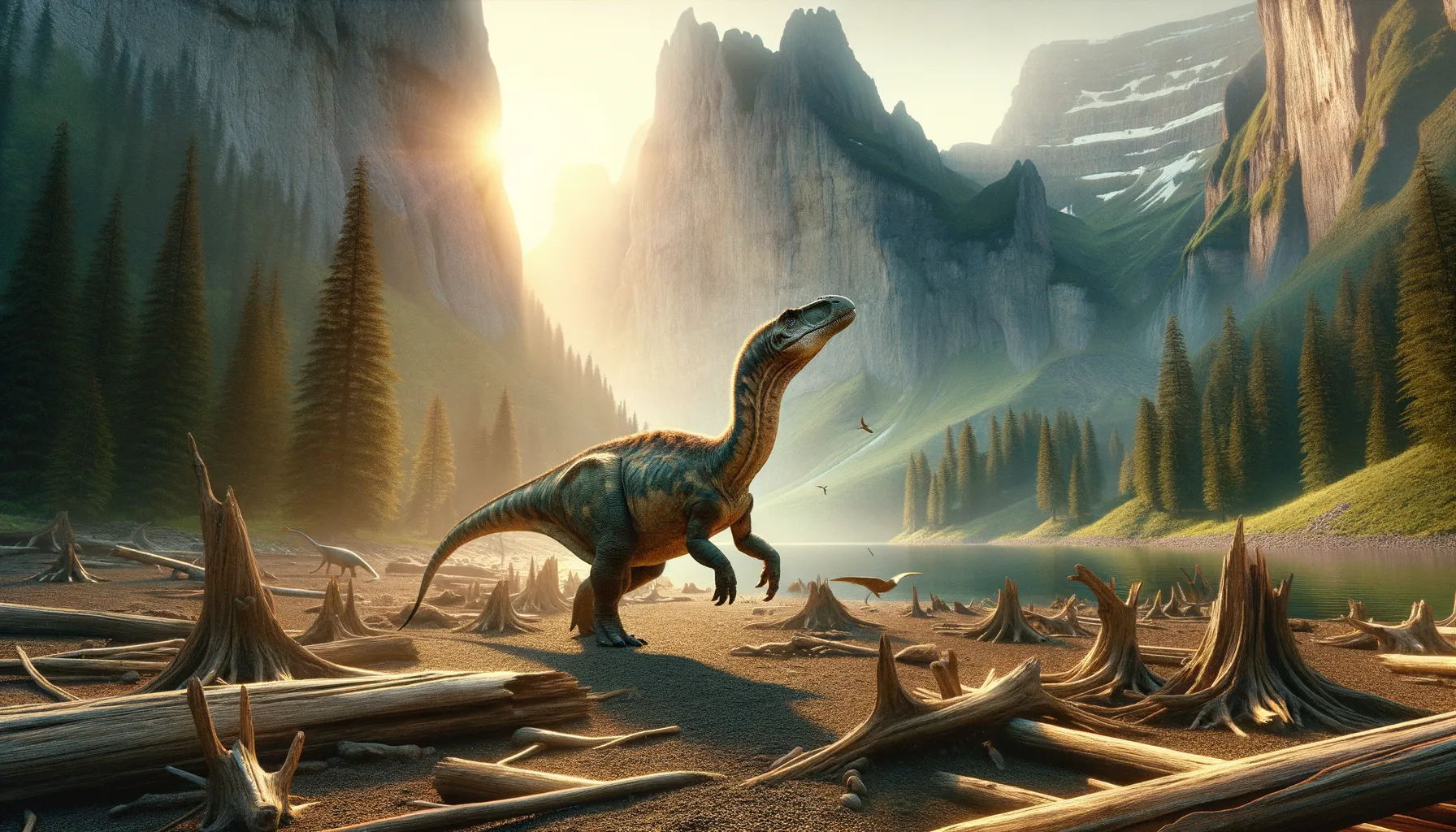
Magyarosaurus
Small giant of the Cretaceous islands!
Period
Cretaceous
Length
Measured up to 6 meters in length.
Height
Estimated to be around 2 meters tall.
Weight
Weighed around 1 ton, much smaller for a sauropod.
The Magyarosaurus was a small, long-necked dinosaur from the late Cretaceous period. Unlike most sauropods that were known for their massive size, Magyarosaurus was relatively small, an adaptation believed to be due to its island environment. This dinosaur roamed what is now Romania, offering insight into how geographic isolation can influence evolution. Its unique evolutionary traits have intrigued paleontologists, helping to shed light on the mechanisms of 'island dwarfism.'
Diet
Magyarosaurus was herbivorous, feeding on a diet that likely consisted of ferns, cycads, and conifers. Due to its smaller size, it would have consumed plants closer to the ground.
Hunting
As a herbivore, it did not hunt for prey. It spent much of its time foraging for plants and foliage within its environment.
Environmental challenges
Living on an island, Magyarosaurus faced limited resources which may have influenced its smaller size. It had to compete with other herbivores for food and adapt to a varied and possibly more challenging climate. Isolated populations were also prone to over-predation or environmental shifts, making survival difficult at times.
Speed
Relatively slow-moving due to its small size.
Lifespan
Likely lived for several decades.
First discovery
Discovered in the early 20th century in Romania.
Fun Facts
- Magyarosaurus was a tiny titan compared to its gigantic relatives, measuring only about 6 meters in length, which is roughly the size of a large horse.
- It lived during the Late Cretaceous period, around 70 million years ago, in what is now Romania.
- Despite being small, Magyarosaurus was still a sauropod, a group known for long necks and tails, making it unique among its kind.
- This dinosaur's small size is an example of 'island dwarfism,' a phenomenon where large animals evolve to be smaller on islands with limited resources.
- Magyarosaurus is named after the old name for Hungary, where it was first discovered, even though the fossils were actually found in Romania.
- It was first described in 1932 by the famous paleontologist Franz Nopcsa, who noticed its unusual small size compared to other sauropods.
- Magyarosaurus belonged to the same group as more famous giants like Brachiosaurus and Diplodocus, but it adapted to its island environment in a fascinating way.
Growth and Development
Magyarosaurus likely exhibited slower growth rates, similar to other island-dwelling species. Its smaller size is attributed to evolutionary pressures to adapt to limited food sources and space. The development of smaller body size was a strategic adaptation to survive in its unique habitat.
Habitat
It inhabited an island environment in what is modern-day Romania. This period was marked by lush vegetation and a diverse range of plant life. Being on an island meant that the ecosystem itself was different from mainland environments, offering unique evolutionary pressures.
Interaction with other species
Due to its size, it may have had limited interactions with larger predators. However, it likely coexisted with other herbivorous species, sharing resources. Competition for food might have been fierce among smaller herbivorous dinosaurs.
Natural lifespan
It could live up to several decades, similar to other dinosaurs.
Reproduction
Being a reptile, it is assumed that Magyarosaurus laid eggs. The reproductive strategy might have involved laying several eggs at a time to increase the chances of offspring survival on the island.
Social behaviour
It might have lived in small groups or herds to protect against predators and support communal living. This social behavior would help in foraging and protecting the young.
Fossil locations
Fossils of Magyarosaurus have been primarily found in Romania, particularly in the Hațeg Basin. This discovery site has provided crucial insights into its lifestyle and the environmental conditions of the time.
